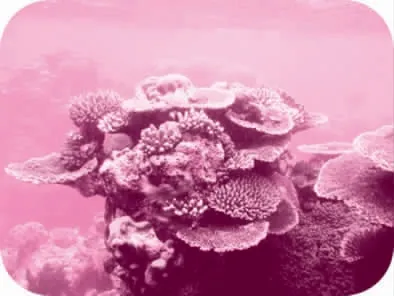Can it help restore Australia's Great Barrier Reef?
2020-06-17

题材体裁 篇幅 建议用时351 6分钟环保 说明文
Australia's Great Barrier Reef, home to over 1,500 fish species and countless other sea animals,is in trouble. Rising ocean temperatures have destroyed about half of its coral since 1998. Now, some scientists are hoping that a gigantic piece of pumice (浮石) stone currently floating towards Australia will aid in the recovery of the world's largest coral reef system.
The massive sheet of stones, which stretches out 58 square miles—about the size of Washington, D.C.—was first spotted by Shannon Lenz on August 9, 2019 who was sailing through a pumice field. A few days later, on August 17, Michael and Larissa Hoult, an Australian couple sailing to Fiji, reported encountering “a sheet made up of pumice stones from marble to basketball size and water wasn't visible on it”, on their Facebook page. The couple later told CNN that they'd been at sea for 10 days when they saw the floating stone.
The floating sheet is believed to have been created by an underwater volcanic explosion recorded by NASA Earth Observatory satellites near Tonga in early August. The porous(多孔) stones, which are being pulled towards Australia by the ocean currents at speeds of about 10-30 kilometers per day, are fascinating to observe. However, what makes the raft invaluable to scientists is the array of organisms which live in the tiny holes.

Scott Bryan, a professor at the Queensland University of Technology, is optimistic that the rocks will sink around the Great Barrier Reef, forcing the dwellers (栖身者) to attach themselves to the reef, allowing for entirely new colonies of coral to grow.However, even if Bryan is right, the raft's ability to restore the Great Barrier Reef may be limited. A 2006 study conducted on a similar pumice stone sheet found thousands of organisms attached to the stones. However, coral polyps (珊瑚虫), which is important to the reef's restoration, accounted for just 1% of the rock-dwellers. Therefore,instead of pinning their hopes on Mother Nature, humans need to take action now and save the world's largest coral reef system before it's too late.
阅读检测
1. What can we infer about the pumice stone from the text?
A. It's a beautiful tourist attraction.
B. It was discovered unexpectedly.
C. It's as large as the capital of the US.
D. It was finally identified by a couple.
2. Why is the pumice stone considered to be able to restore Australia's Great Barrier Reef?
A. It is floating towards Australia.
B. It can provide coral polyps food.
C. It has a healthy coral reef system.
D. It is home to countless organisms.
3. What is the author's attitude to the effects of the stone on Australia's Great Barrier Reef?
A. Supportive. B. Indifferent.
C. Doubtful. D. Worried.
4. What is the purpose of the text?
A. To encourage people to protect Great Barrier Reef.
B. To report the present situation of Great Barrier Reef.
C. To judge an approach to restoring Great Barrier Reef.
D. To stress the importance of restoring Great Barrier Reef.
语言学习
难句分析
Scott Bryan, a professor at the Queensland University of Technology, is optimistic that the rocks will sink around the Great Barrier Reef, forcing the dwellers to attach themselves to the reef, allowing for entirely new colonies of coral to grow. 昆士兰科技大学教授斯科特·布莱恩乐观地认为,岩石将会在大堡礁周围下沉,迫使栖身者依附在珊瑚礁上,让全新的珊瑚群落得以生长。
该句为主从复合句,句中that引导的从句中有两个现在分词短语作结果状语。
